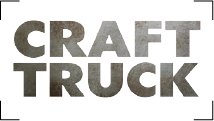Recently, on the Business of Film podcast, we had the opportunity to interview Nicholas Gonda, Co-Founder of TUGG and Emily Best, CEO of Seed & Spark.
Between these two companies, we get a 360 degree view of social media and the critical crowdfunding tips to both finance and distribute your film.
While this post is an amalgamation of some of the most salient points from these interviews, we encourage you to listen to Nicholas and Emily as they know their business cold and are incredibly precise in their explanations of utilizing their platforms for maximum benefit.
Distilled here are what we consider top tips from these two experts in the field.
1. UNDERSTAND YOUR AUDIENCE
Seed & Spark, which is currently a curated crowdfunding platform, asks two questions of prospective filmmakers
Who is your audience?
What does your audience want?
The filmmakers that can most directly answer these questions truly understand their audience and will ultimately have the best chance of success.
And lets be clear, 18-25, female, is not an audience. It’s a demographic.
Don’t confuse audience information with demographic information.
An audience is a group of real human beings who have lives that they live every day. They’re not going to get involved in a crowdfunding campaign because they are woman with a professional carreer and a college education. That is a demographic. It is a very vague notion and its useless to you in crowdfunding.- Emily Best
Your audience can be identified by its hopes. It’s dreams. What inspires these people? What do these people think about? What’s important to them?
2. DON’T MISTAKE THE PLATFORM FOR THE DISTRIBUTION METHOD
It’s easy to think that just because you are using the social media platform – be it the two mentioned in this post, or others – that the works is done. It’s not. In fact, it hasn’t even started.
The platform is only a tool. But as we’ve come to learn, the tool needs early adopters. And those early adopters come from your inner circle. They are ones that give you social proof.
The inner circle could be from on-going relationships in your social spaces or direct via email. In fact, email continues to be the number one way to engage those early adopters. That, and one to one engagement on social media platforms.
The early stages of any campaign gives you the ability to reach out on an individual basis and create solid relationships and a foundation for future successes.
3. UNDERSTAND YOUR EXPECTATIONS
When you are planning both your fund raising and distribution plans, make clear expectations about what it is that you want to accomplish.
For example, if you are looking to get your film into 100+ theatres, as Nicholas says
You’ll need a team. You’ll have to identifiy who your outreach partners are. It’s a much broader process then if you are trying to do a 10-15 city approach where you might be able to achieve that by leveraging your cast and crew networks.- Nicholas Gonda
The first question that TUGG asks filmmakers is what they expect to acheive so that they can put together a strategy guide.

4. THEATERS WANT TO BOOK YOUR FILM
It’s easy to think that getting your film into theatres is difficult, especially when comparing your film to studio films.
But that’s not how theatres think. Theatres look at your film and do a risk analysis on it. Will your film draw and audience? Period.
What is the likelyhood that booking an indie film will get bums into the seats as compared to the $200 million studio film?
Well, you might think that’s not a fair comparison. But the truth is that that’s the only comparison. Your film competes with every other product on that can be booked into a theatre at a given time.
And that’s the magic of crowdsourcing your audiences. Theatres don’t want empty seats. But until now, there’s been very little integration in the models that allow for theatres to get the certainty they need.
Up until we started developing TUGG we only had excuses, not logical answers. It was just a matter of the right pieces not being put in place to eliminate the risk invovled for movie theatres as well as for distributors to be able to see certain films in those localities; versus having to say no just because of the speculation of if there was really going to be an audience for it.- Nicholas Gonda
Once you elimate the risk, Nicholas says, you open up the opportunity for anything to happen in terms of programming.
If a theatre owner or national theatre chain knows a theatre will be totally booked, then they’ll book your film.
Theatres presently operate with a 15% utilization rate… that is say that 85% of the seats, on average, are empty.
Now put that into the context of a social media platform like a TUGG which can guarantee a minimum threshold of tickets sold. The economics, when put into that context, begin to look very very attractive.
We are not only in an age of the democretization of the production of content, but we are finally reaching a point where producers and filmmakers can get their films into theatres and play along side studio films.
5. IT’S NOT ABOUT FUNDRAISING; IT’S ABOUT FILMMAKING
Filmmaking is more than just the process of fundraising, it’s about getting your film seen by audiences.
It’s basically impossible for 99% of us to make a living making indie films… The online distribution business is like the wild west. It’s like a weird land grab in a place where space is infinite. So if you have an infinite amount of space, how do you attract people to that one bit of infinite space that you claim.- Emily Best
The film making process is becoming more and more about engagement of an audience. And taking that audience from beginning straight through the process of funding, producing and distributing your film.
It’s becoming less about only being on the front-end (funding) or back-end (distributing) and more about giving your audience a fully immersive and inclusive experience.
6. CROWDFUNDING IS NOT AN ASK; ITS AN OFFERING
When you start a campaign it’s important to frame the question that you are asking your audience and potential backers, as Emily says
You can’t get online and go, “please, somebody, give to my campaign or I can’t make this movie”; nobody cares. It’s about, lettings your audience know, here’s a very personal story and here’s what I think this film will do. Will you join me on this journey? It’s an offering.- Emily Best
Don’t make the mistake of thinking that your campaign is about asking for somthing. You aren’t asking; you are offering something potentially personal – but then again, possibly not – but either way, you are offering your audience something that would be of interest to them. And you are asking them participate on this journey.
7. THE VALUE OF SOCIAL
Many people will start their campaigns with relatively small social metrics such as 200 Facebook likes and 50 Twitter followers etc. Or possibly zero social prescence.
The most important conversions are personal emails. Personal Facebook messages. Direct messages on Twitter. Those are still the highest conversation rates. And that the first 20% for the most part has got to come from your own community in order to legitimize you to strangers.- Emily Best
Its about taking every opportunity you can to build your email list and your personal followings so that you “own” your audience.
Audience engagement, interaction and connection is the only thing that gives filmmakers actual independence all the way through their careers.
Related posts:
Business of Film podcast with Nicholas Gonda, Co-Founder TUGG
Business of Film podcast with Emily Best, CEO Seed & Spark
Want more stuff like this? Get email updates (it’s free)
